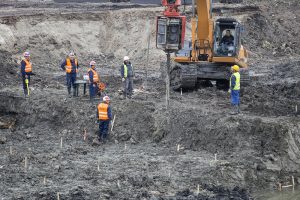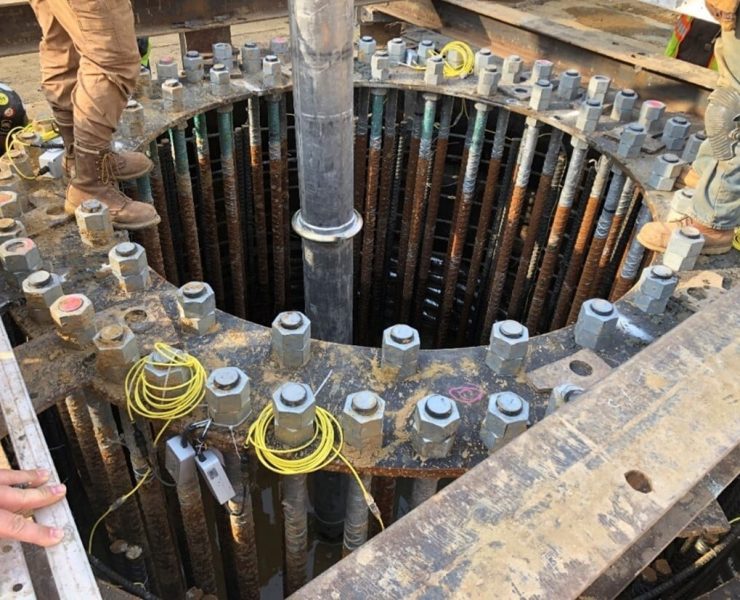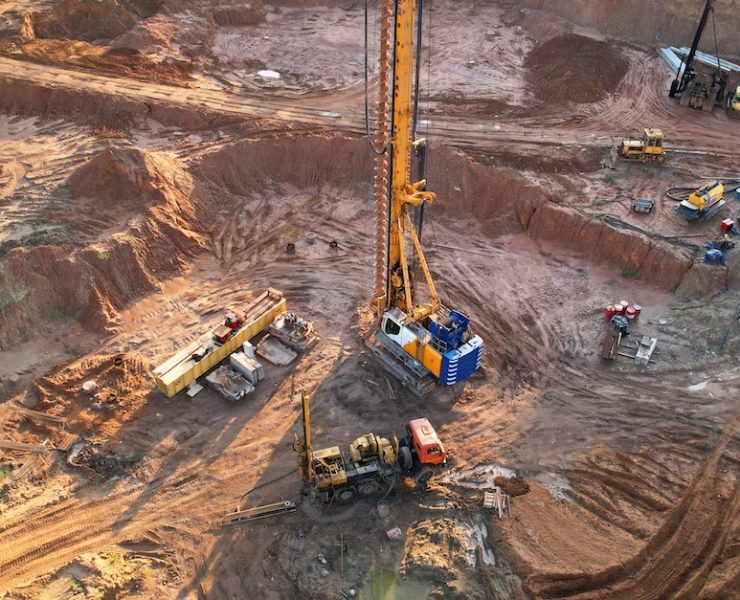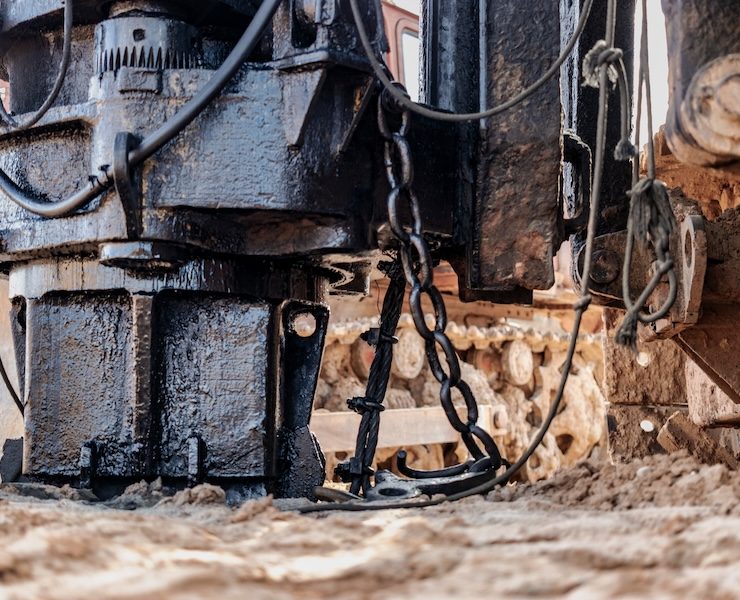The Importance of Geotechnical Engineering


A Foundational Profession
Soil mechanic authorities, subsurface condition experts, foundation designers.
These titles all reference geotechnical engineers, professionals that ensure the long-term stability of various structures and earthworks.
Tasked with designing foundations, slopes and retaining walls, geotechnical professionals rely heavily on self-conducted site investigations, rather than code-based design. This reliance provides them, and a project’s developer, a wealth of site-specific information that is applied during subsurface design and utilized throughout construction.
Ground Assessment
When conducting a foundation investigation, engineers must oversee subsurface drilling, the recovery and testing of soils, and in situ testing.
These operations enable professionals to analyze a host of soil mechanics including weight, porosity, void-to-solid particle ratio, permeability, compressibility, maximum shear strength, bearing capacity and deformations.
If the structure requires a deep foundation, engineers will utilize a cone penetration test to estimate the amount of skin and end bearing resistance in the subsurface.
Groundwater levels and the stability of natural or designed slopes are also measured during investigation.
When analyzing a slope’s balance of shear stress and shear strength, or its ability to withstand and undergo movement, rotational slides and translational slides are commonly considered. Rotational slides fail along a curved surface, with translational slides occurring on a planar surface. A professional’s goal is to determine the conditions at which a slope failure could occur.
Findings from these investigation facets are typically crafted into an in-depth log, which is referenced by the engineer during the design of a structure’s foundation and retaining walls.
Often, findings suggest that a site’s soil should be treated to improve its shear strength, stiffness and permeability prior to design and construction.
When it comes time to lay out foundation plans, professionals are increasingly focused on sustainability, more specifically how to reduce a foundation’s carbon footprint.
One tactic has been to replace 20 percent of a foundation’s cement with fly ash, a waste product from coal fire power plants. The use of this ash is said to minimally effect the foundation’s concrete properties while reducing costs and the base’s carbon footprint by 15 percent. A foundation accounts for an estimated 80 percent of a structure’s total carbon footprint.
Geotechnical engineering can be broken down into a trio of subcategories based on the location and type of structure.
Professionals working on above-ground structures must have knowledge of both shallow and deep foundations.
Shallow foundations include footings or a slab that transfers a building load near the surface. Most slabs are on-grade and must be designed to allow for potential ground shifting, as soil conditions routinely change at or near the surface.
Piles, drilled shafted, caissons, piers and earth-stabilized columns all represent deep foundations that rely on end bearing resistance, frictional resistance along their length, or both.
For engineers working on underground and above-ground earthwork projects, retaining wall design is of significant importance.
When designing these walls for tunnels, dikes, levees, landfills, channels and reservoirs, professionals must ensure the weight of the retained material doesn’t create enough lateral earth pressure to cause the wall to deform or fail. Undissipated groundwater behind the wall must also be taken into account, as this fluid can cause additional horizontal hydraulic pressure on the wall.
Common types of lateral earth support structures include gravity and cantilever walls, along with excavation shoring.
Gravity walls rely on their size and weight to resist pressures from behind. A number of these walls feature soil reinforcement at their horizontal layers. Made from steel-reinforced, cast-in-place concrete or mortared masonry, cantilever walls resist lateral pressures by friction at their base.
Sheet piles as well as soldier beams and lagging are commonly used excavation shoring which extends below the base of excavation but not laterally beyond the retaining wall.
Besides designing and assessing the performance of retaining walls, engineers
are also expected to determine the strength of excavations, analyze embankment behavior, and monitor filling and compaction jobs on earthwork projects.
Offshore engineering, a subsector of geotechnical, presents additional challenges to professionals.
Because these human-made sea structures, mainly oil platforms, are exposed to wind, waves and currents, the required foundation investigation is significantly more in-depth and expensive than one for an onshore project. Additionally, an offshore foundation failure consequence is much more severe than an onshore failure.
Structures like a pier or jetty can be fixed in place within the seabed, while oil platforms are floating structures that remain roughly fixed relative to a geotechnical anchor point.
A tension-leg mooring system is the most common type of anchoring for offshore platforms. The system features vertical tethers under tension, which provide large restoring moments during pitch and roll movements.
Whether on land or sea, the tasks performed by geotechnical engineers are numerous, in-depth and paramount to the long-term stability of structures and earthworks. With the advent of more ground improvement techniques and sustainable design methods, professionals will be challenged moving forward – having to ensure the strength of foundations, slopes, and walls, while reducing their environmental impact.
What is the role of geotechnical engineering in construction projects?
Geotechnical engineering plays a crucial role in ensuring the stability of structures by conducting in-depth site investigations, analyzing soil mechanics, and providing site-specific information for foundation and retaining wall design.
How do geotechnical engineers address sustainability in foundation design?
Geotechnical engineers focus on sustainability by incorporating techniques like replacing a portion of foundation cement with fly ash, a byproduct from coal-fired power plants, to reduce the carbon footprint of foundations by up to 15%.

















